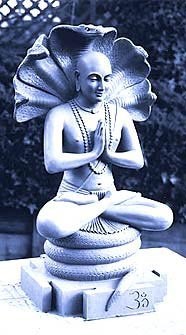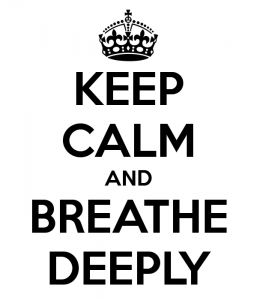The asana (yoga pose) is the most well known aspect of the vast spectrum of Yoga. At the point that when we do an asana we imply that we are doing yoga (and often it is not necessarily true).
“Asana” is a Sanskrit word that means “to sit”, “to be established in a particular position”.
It is important to make a difference between the yoga-asana and exercise or stretching.
The following concepts will explain how to perform an asana following yogic principle to get the full benefits of yoga.
1) Sthira Sukam asanam meaning comfortable and steady posture
Patanjali in his Yoga Sutra (the fundamental text about yoga philosophy) gives the following definition of asana:
“Sthira sukham asanam”,
“ The position that is comfortable and steady”.
And this is one of the main points that we have to make sure we follow in our practice.
Sthira refers to stability, firmness and alertness.
Sukham refers to relaxed, comfortable and with ease.
Sthira and Sukam should be equally present.
Sthira allows the mind to be alert and vigilant and
Sukam allows the mind to be at ease and relaxed.
When the practice is done in this way the yoga pose easily induces a quite and alert state of mind, which is necessary for meditation.
2) Form and function of the yoga pose
On a practical level it is important to recognize these 2 aspects of an asana.
Form and Function
The form works on the gross level, how the asana looks and what is seen.
The function works on the subtle level, the effect of the asana on you and what is experienced in the asana.
Ideally the function should contain the sthira and sukham concept we discussed earlier.
The function is much more important than the form and if we give too much importance to the form, the functionality of the asana can be lost, losing sukham and sthira.
So it is good to understand that is not important how an asana looks, but how the practitioner feels whilst doing that asana.
This means you should use the necessary adaptation and modifications to an asana to make sure that the function of the asana is working and that the asana itself is comfortable (sukam) and steady (sthira).
There should be no strain whilst doing an asana if you are using the steady and comfortable principles of yoga through out your practice.
For example Pashimottanasana (the seated forward bend pose):
The form tells us that we need to bend forward and put the head between the knees and hold the toes with both hands.
The function is to stretch the back of your body.So we can use an adaptation so that a practitioner with stiff or short hamstrings can still enjoy the benefit of the asana without following the exact form that otherwise will lead to an uncomfortable position or worst to an injury.
3)The breath.
Everybody knows how important the breath is in yoga.
It’s considered to be the link between the body and the mind.
In the “Hatha yoga pradipika” (an ancient hatha yoga text), it is written in Chapter 2, Verse 2:
“When the breath wanders also the mind wanders, when the breath is still also the mind is still.”
In the famous Yoga Sutra (Chapter 1, Verse 31) Patanjali explains the 4 reasons that make the mind unstable:
1) Suffering / pain
2) Negative thinking
3) Shaking of a body part
4) Disturbed / irregular breath.
It is not necessary to use ancient wisdom to realise that the mind-emotional pattern are related to particular breathing patterns as we can just observe ourselves in our day to day life to realise this.
As you can see it’s very important in our yoga practice to be aware of the breath, make sure that is synchronised with the movement of when we go into and out of an asana.
If the breath is irregular or if we go out of breath it means that our asana is not comfortable and stable.
It’s good to use Ujjay breath during the asana practice, because it helps to focus the mind on the breath, lengthen the breath and understand our capacity, if we cannot maintain the same quality of ujjay ,we are straining our body, and therefore have moved away from doing yoga according to the yogic principles.
4) Mindfulness- Witnessing Attitude
This is probably the most important aspect of yoga and following this allows us to go deep into the practice of yoga.
Here we move into the meditative aspects of yoga.
To witness means to be aware without involvement.
That’s the key of the yoga practice, the very core.
Witnessing is to move our point of view to the centre, to the core of our being and from there to observe.
In the yoga practice we start to witness the gross aspect of ourselves first: the body.
Then we move into witnessing the breath, which is the link with our mind.
On a more advanced level we are able to witness the thoughts and the emotions that arise in our mind during the asana, so we realize that we are not the body and we are not the mind but we become the observer of our body –mind.
During this observation process we need to be completely receptive, not judgmental and we need a calm and alert mind.
Witnessing brings our practice from the physical aspect to the mental aspect and behind.
So we can see how these 4 points are connected to each other.
Whilst doing an asana I adapt the form of the asana to my body, using the necessary modifications and adaptations so that the right function of the asana is present and my posture is comfortable and steady.
The comfortable and steady position then reflects in the regular breath which allows my mind to be relaxed and alert so that a meditative state arises, allowing myself to observe the connection between the body, breath and mind present in that particular moment.
Following these 4 points we will also be sure that our practice will be free from any kind of injury as the awareness of body and breath and the tendency towards a comfort and steady posture will prevent us to do any incorrect or dangerous movement. Thereby preventing us from pushing our body too hard.
So next time you step on the mat keep these things in mind:
1) Comfortable and steady posture
2) Adapt the asana to your body (accept your body as it is)
3) Be aware of your breath
4) Be the witness of yourself
By Andrea Barra





